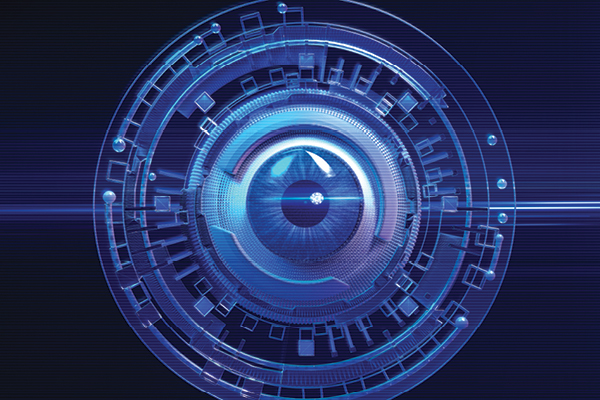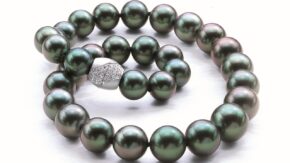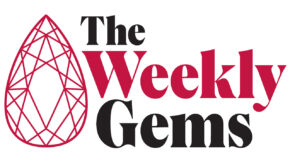Automated grading makes it faster and easier to evaluate diamonds, but what does this rapidly evolving field mean for gemologists, and where is it headed?
Artificial intelligence (AI) influences how we think, work and play, with algorithms guiding our behaviors online and in real life. Now AI is injecting scientific precision and computerized analysis into the traditionally subjective and manual diamond-grading process.
The growth in AI-assisted grading is a positive step for the industry and for consumers, says Zhanna Beissekova, head gemologist of London-based lab International Gemological Reports (IGR). “Clarity grading is the most time-consuming part of examining the stone, especially when it comes to SI- and lower-clarity stones. This technology can help laboratories increase efficiency and grade more diamonds in less time, leaving gemologists to focus on other aspects of the job.”
What’s more, she adds, it can make it harder to produce fraudulent grading reports, and can help diamond producers sort stones into subcategories to suit the most appropriate sales markets.
Debbie Azar agrees that there are benefits. “The diamond trade wants and needs a way to grade diamonds that’s more consistent, accurate, and repeatable than what humans can provide,” says the co-founder and director of New York-based grading lab Gemological Science International (GSI).
But that doesn’t mean the AI-assisted process signals the end of human graders. “As in all industries, development of technology means workforce adaptation,” Azar says. “Human diamond graders may have to upskill to learn how to operate the technology, or find different ways to contribute to the process, such as screening diamonds remotely. There are lots of opportunities, as technology shifts, for people to apply their specialized knowledge and experience in different but valuable ways.”
In any case, she observes, “the first diamond colorimeters to assess D to Z diamond color were developed in the 1940s, so really, automated diamond grading is nothing new.”
Clarity of purpose
The 1940s were also when the GIA began developing the diamond grading system known as the 4Cs — cut, color, clarity and carat weight. It issued its first diamond grading reports in 1955, and the 4Cs model remains the universally recognized diamond grading system today.
The institute has since created its own automated clarity-grading system in partnership with computing giant IBM. The proprietary system went into use at the GIA labs in 2020.
IBM “added expertise in artificial intelligence and machine learning to our unparalleled data set of clarity information on tens of millions of diamonds, along with the skills of the GIA’s expert graders,” says Pritesh Patel, the GIA’s senior vice president and chief operating officer. The expectation is that having human graders review and validate each recommendation from the AI system will make it more precise and accurate.
“The river of diamonds that flows through our laboratories every day provides a unique opportunity to see a wide range of [specimens], resulting in a robust, well-trained AI system,” affirms Tom Moses, the GIA’s executive vice president and chief laboratory and research officer.
The GIA is looking to expand its automation to evaluating fancy colors as well, says a spokesman for the institute: “Based on our years of experience with instrument-supported color grading of D to Z diamonds, we are developing algorithms to support grading of fancy-colored diamonds.”
That said, Moses stresses that “our expert laboratory staff will always be a crucial part of our diamond grading process. As we develop more instrumentation to support that process, for everything from weighing stones to scanning for proportions to assisting with color grading, diamond graders will be able to focus on more complex aspects of grading, along with new services.”
One of the GIA’s competitors in the AI department is the Sarine Clarity system from Israel-based firm Sarine Technologies (see box). The machine automatically maps diamond inclusions and blemishes, thereby avoiding inconsistencies that might result from subjective human perception. As with the GIA, Sarine’s grading algorithm comes from years of research by a team of gemologists studying assorted polished diamonds, with further enhancement from machine learning based on those measurements.
Probing questions
When evaluating an AI-assisted diamond grading program, says Azar, one of the fundamental questions is, “How do the program’s algorithms work?” Considering that computers just process the data they’re given — a situation that early IBM programmer George Fuechsel famously described as “garbage in, garbage out” — Azar suggests querying what kind of data is going in.
Other factors like hardware specifics, lighting conditions, orientation, and the assessment methodology are useful to know. “What grading standards are used?” she asks. “Diamonds are three-dimensional objects, and they’re examined by human graders in all three, even if the final assessment is made face-up.” She also recommends confirming how the program sets its baseline for comparing the stones.
The cameras and sensors the AI systems use must be sensitive enough to accurately discern higher clarity grades, Azar adds, affirming that the GIA and Sarine both have state-of-the-art instrumentation.
Indeed, ever since the first guild of diamond cutters and polishers formed in 1375 in Nuremberg, Germany, the art and science of diamond grading has been steadily evolving. Now that automated grading systems are achieving increasingly objective analyses at lightning speed, there’s no going back.
Image: Jacey@Debutart



